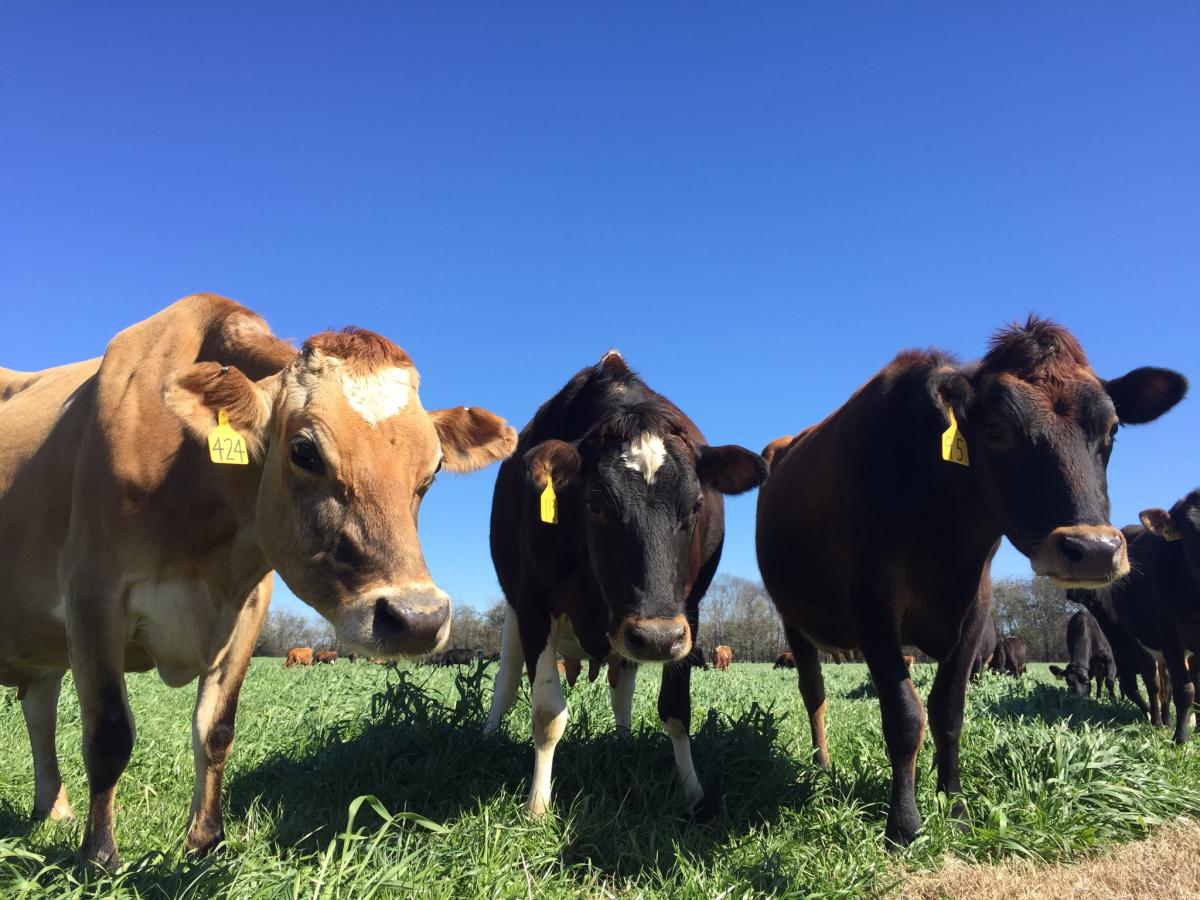 PHOENIX, AZ – National Dairy FARM Program participants Chris and Mary Kraft of Fort Morgan, Colorado, have won the 2018 National Cattlemen’s Beef Association Beef Quality Assurance (BQA) Award in the dairy category. The BQA Awards – announced today in Phoenix – recognize the nation’s leading beef and dairy producers who demonstrate a commitment to the highest quality animal care.
PHOENIX, AZ – National Dairy FARM Program participants Chris and Mary Kraft of Fort Morgan, Colorado, have won the 2018 National Cattlemen’s Beef Association Beef Quality Assurance (BQA) Award in the dairy category. The BQA Awards – announced today in Phoenix – recognize the nation’s leading beef and dairy producers who demonstrate a commitment to the highest quality animal care.
Chris and his wife Mary started their own dairy business, which has since grown to encompass two operations near Fort Morgan. Badger Creek Farm is considered home, where they and son Stratton milk 1,300 cows. Quail Ridge Dairy is 3 miles south, where they milk 4,300 Holsteins. Chris is both a National Milk Producers Federation board member – focusing on animal care and sustainability issues – and a board director with Dairy Farmers of America (DFA).
“Both Chris and Mary are passionate advocates for quality milk production and never waver from their commitment to make sure the cows on their farms are content, comfortable and well cared for,” said NMPF President and CEO Jim Mulhern. “They are well deserving of this prestigious award.”
The National Cattlemen’s Beef Association, a contractor to the Beef Checkoff, announced the winners of its prestigious 2018 Beef Quality Assurance (BQA) Awards today at the National Cattlemen’s Beef Association annual meeting in Phoenix. The awards honor outstanding beef and dairy producers and marketers that demonstrate the best animal care and handling principles as part of their day-to-day operations. Awards were given in five categories: Cow-Calf, Dairy, Feedyard, Marketer and Educator of the Year.
“By combining their passion with a focus on preventative health management, the farm showcases their commitment to BQA guidelines in every step of their dairy operation,” BQA said in its announcement. “What makes the Krafts unique is their two-farm operation. One site houses healthy cattle. The other manages animals that may need a little extra ‘TLC.’ By using this two-site system, Kraft Family Dairies has been able to focus their management appropriately to enhance the well-being of their herds.”
NMPF and its National Dairy Farmers Assuring Responsible Management (FARM) Animal Care Program partners with both NCBA and BQA, working closely to create valuable producer resources on stockmanship, dairy beef welfare and quality, and animal care. The two organizations also work closely on stakeholder engagement and customer outreach.
“We’re proud of our ongoing partnership with the BQA program, and appreciate their recognition of one of our leading FARM Program participants with this award,” said Emily Meredith, NMPF chief of staff. “This award demonstrates that, through collaboration and outreach, producers can be recognized for the work they do in upholding industry standards and their participation in programs like FARM.”
###
The National Milk Producers Federation (NMPF), based in Arlington, VA, develops and carries out policies that advance the well-being of dairy producers and the cooperatives they own. The members of NMPF’s cooperatives produce the majority of the U.S. milk supply, making NMPF the voice of dairy producers on Capitol Hill and with government agencies. For more on NMPF’s activities, visit our website at www.nmpf.org.


 National Milk continues to advise dairy farmers not to file ammonia-related air emissions reports until an appeals court issues a mandate that triggers a reporting requirement – an action that could be taken later this month.
National Milk continues to advise dairy farmers not to file ammonia-related air emissions reports until an appeals court issues a mandate that triggers a reporting requirement – an action that could be taken later this month. NMPF is now accepting applications for its National Dairy Leadership Scholarship Program for academic year 2018-2019. Applications must be received no later than Friday, April 6, 2018.
NMPF is now accepting applications for its National Dairy Leadership Scholarship Program for academic year 2018-2019. Applications must be received no later than Friday, April 6, 2018. NMPF expressed support this month for the Maryland Department of Environment’s regulation to establish a water quality trading program, one that could serve as model for how other states provide opportunities for dairy farmers to benefit from the management of nutrients.
NMPF expressed support this month for the Maryland Department of Environment’s regulation to establish a water quality trading program, one that could serve as model for how other states provide opportunities for dairy farmers to benefit from the management of nutrients.



